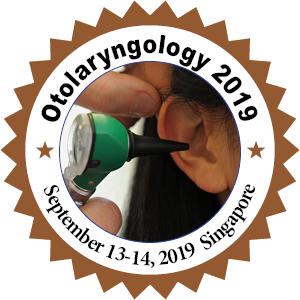
Ahmed Hasan Ashfaq
Rawalpindi Medical University, Pakistan
Title: Comparison of postoperative resolution of Epiphora and complications between Endoscopic Dacrocystorhinostomy with and without stenting in Chronic Dacryocystitis
Biography
Biography: Ahmed Hasan Ashfaq
Abstract
Introduction: The preferred approach for opening the chronically infected nasolacrimal sac is transnasal endoscopic. A silicone stent is placed to maintain the patency of the sac but its role is becoming controversial.
Objective: The purpose of our study was to compare endoscopic dacrocystorhinostomy with and without stenting in terms of the resolution of epiphora and postoperative complications associated with either method.
Methods: This randomized clinical trial was conducted in the ENT department holy family hospital Rawalpindi from November 2015 to April 2018. A hundred patients with Chronic dacryocystitis were randomized into two groups. The stent group received endoscopic DCR with silicone intubation, while the non-stent group received endoscopic DCR without silicone intubation. Both groups were evaluated at a follow-up visit at 1st, 6th and 12th and 24th postoperative weeks for anatomical success by patent ostium on irrigation and functional success by the free flow of dye from ostium and postoperative resolution of epiphora (using Munk’s score). Complications like intranasal adhesions, Canalicular stenosis, and Sac stenosis were also recorded. Data was entered and analyzed using SPSS 20.
Results: Both groups were compared for gender, resolution of epiphora, nasal and ocular irritation, patency of neo-ostium, postoperative synechiae and granulations. Resolution of epiphora was observed in 88.8% patients in the non-stent group and 82.6% patients in the stent group respectively. Reduction in the size of ostium was noted more in the stent group due to postoperative synechia and granulation formation. Benefits of the non-stent group are fewer patients discomfort, less operating time, cost-effectiveness, less stenting related problems and less follow up visits.
Conclusions: It is concluded that although there is no significant difference between the post-op results of Endoscopic DCR with or without stenting in terms of resolution of epiphora but DCR without stenting should be the procedure of choice for chronic dacryocystitis because of other factors. The stenting should only be reserved for selected patients.

